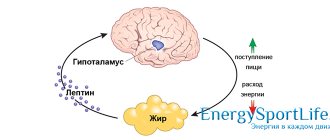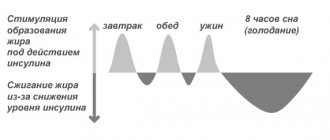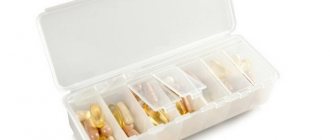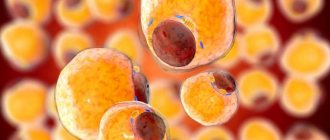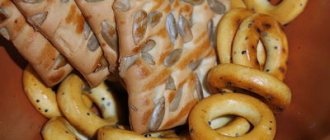— Advertising —
Iron is necessary for the synthesis of functionally active hemoglobin molecules, the main carrier of oxygen from the lungs to the tissues. A low amount of hemoglobin in the blood leads to anemia. Iron deficiency is the most common form of the disease, occurring in 90% of cases.
Regardless of the cause, iron deficiency leads to a decrease in the quality of life: deterioration of health, loss of performance. Signs and symptoms of anemia vary depending on its severity and current health status. In rare cases, iron deficiency is asymptomatic.
Below we have looked at the 10 main symptoms of iron deficiency, starting with the most common.
Fatigue
A feeling of constant fatigue that does not go away even after a long rest is one of the most common signs of iron deficiency. This symptom occurs in more than 50% of people with anemia. You may also experience decreased performance and difficulty concentrating.
The reason is low hemoglobin levels. This iron-containing protein is responsible for transporting oxygen to tissues. The less hemoglobin, the less oxygen all organs, including muscles and brain, receive. As a result, the body is in a state of constant oxygen starvation. As a result, cellular metabolic processes are disrupted, and you feel tired even after minor exercise.
It is difficult to diagnose anemia based on this symptom alone, since fatigue is considered almost the norm in the modern rhythm of life, especially in a metropolis.
Pale skin and mucous membranes
Pale color of the skin and the inside of the lower eyelid is a sign of moderate to severe anemia.
It is hemoglobin that gives blood its red color. A decrease in its content in the blood makes it less red. Therefore, the skin of people with iron deficiency becomes pale and acquires an earthy tint. If you lower your lower eyelid, the color of the mucous membrane should be bright red. A pale pink hue may indicate an iron deficiency.
Dyspnea
Hemoglobin delivers oxygen to tissues. With iron deficiency, hemoglobin concentration drops. As a result, the muscles do not receive enough oxygen to function normally. As a compensatory mechanism, the respiratory center in the brain is activated, which leads to increased breathing even with minimal physical activity, such as walking.
If your usual level of physical activity is accompanied by shortness of breath and a feeling of lack of air, one of the possible reasons is a lack of iron.
Dizziness and headache
Iron deficiency can cause headaches, which are usually accompanied by dizziness. The reason for the development of this symptom is chronic brain hypoxia, which develops with low levels of hemoglobin in the blood. When there is a lack of oxygen in the brain, blood circulation is disrupted. First of all, venous blood flow is affected, which leads to increased intracranial pressure and headaches.
There are many causes of headaches, but frequent, recurring pain combined with dizziness may be a sign of iron deficiency.
Cardiopalmus
Tachycardia (rapid heartbeat) is one of the possible symptoms of iron deficiency anemia. An increase in the number of heartbeats is due to the fact that the heart begins to work harder to compensate for the lack of oxygen by increasing the volume of blood flowing through the tissues. This can lead to arrhythmia and the feeling that the heart is beating too fast.
Intense work of the heart under conditions of oxygen starvation leads to rapid wear and tear of the heart muscle. Therefore, with severe anemia, heart murmurs are heard and heart failure may develop.
Dry skin, hair loss
Dry skin and brittle, thin hair are one of the symptoms of iron deficiency. With severe anemia, increased hair loss is observed. The reason for this is the deterioration of blood circulation and disruption of collagen synthesis. In an effort to compensate for the lack of oxygen, the body limits peripheral blood flow. The main flow of blood goes to vital organs. Therefore, the skin and hair receive less not only oxygen, but also less nutrients, which significantly worsens their condition. In addition, iron is necessary for the functioning of enzymes that synthesize collagen. This protein is responsible for the turgor (ability to resist mechanical stress - ed.) of the skin.
If you notice that the amount of hair remaining on your comb has increased sharply, this may be due to iron deficiency.
Glossitis, stomatitis
With iron deficiency, the oral mucosa is often affected. You may be worried about constant inflammatory processes in the oral cavity - stomatitis, glossitis, dry mouth, non-healing cracks in the corners of the mouth. The reason for this is the disruption of reparative processes in epithelial tissues in conditions of a lack of iron, necessary for the functioning of enzyme systems.
A pale tongue color is a sign of low hemoglobin levels in the blood. A swollen, abnormally smooth and painful tongue is a symptom of a lack of myoglobin in the tongue muscle. Myoglobin is an iron-containing protein that stores oxygen in muscle tissue.
Restless legs syndrome
Restless legs syndrome is a strong desire to constantly move your legs at rest and during sleep. May be accompanied by a crawling sensation and itching in the legs. Symptoms reach their maximum intensity at night, which leads to sleep disturbance.
The causes of restless legs syndrome and its relationship with iron deficiency are not completely known. However, according to research, 25% of people suffering from iron deficiency anemia develop this syndrome. Its severity depends on the severity of anemia.
Brittle nails
With iron deficiency, the condition of the nail plate worsens. Nails become brittle, peel and break easily. Dystrophy of the nail plate – koilonychia – develops. At the same time, the nail becomes thinner and takes on the shape of a spoon: the edges of the nail plate rise, and the center bends inward. This is a fairly rare symptom that develops with severe anemia.
Other possible symptoms
- Perversion of taste: a person develops a craving for inedible things, a desire arises to eat chalk, earth, paper, ice.
- Increased anxiety.
- Constantly cold hands and feet.
- Long-term low-grade fever – body temperature 37–37.30 C.
- Decreased immunity – frequent colds.
What is iron deficiency?
In simple words, it is a lack of iron mineral in the body. But why is it so important?...
Iron is necessary for the production of hemoglobin, a substance in red blood cells that transports oxygen throughout the body and carbon dioxide.
If you are deficient in iron, your body must work harder to obtain the necessary energy to transport that same oxygen. Imagine, you need to supply every cell of your body with it.
Otherwise, lack of iron in the body will eventually lead to decreased red blood cell production and iron deficiency anemia. And that is not all.
According to a website about a healthy lifestyle, the most well-known consequence of iron deficiency is anemia.
First of all, its lack negatively affects the immune system, a person begins to get tired faster, children’s ability to learn worsens, and endurance decreases. Researchers report that many cases of stomach cancer have been linked to a lack of iron in the body.
But then what is the daily dose and the reasons for the lack of iron in the body?...
You're too pale
There's a reason the words "pale" and "sickly" are often used interchangeably. Hemoglobin gives your blood the red color and thus gives your skin a pink tint. This means that low protein levels can suck the color right out of your skins.
If you have a light complexion, it's pretty easy to notice. However, regardless of your skin tone, if the inside of your lips, gums and the inside of your lower eyelids are less red than usual, low iron levels are to blame.
Daily dose of iron in the body
As the medical aid magazine points out, the daily iron requirement for a person is calculated based on the individual characteristics of his body: weight, gender, age, health status. Below are some approximate calculations:
The daily requirement for iron in children depends on their age:
- in the first year of life - from 4 milligrams per day at the age of 0-3 months to 10 milligrams at the age of 7-12 months;
- at the age of 1-6 years - 10 milligrams;
- at the age of 7-10 years - 12 milligrams;
- at the age of 11-17 years - 15 milligrams for boys and 18 milligrams for girls.
The daily requirement for iron in an adult varies significantly depending on gender:
- for men - 10 milligrams per day;
- girls and women of the childbearing period, due to regular menstrual blood loss, need to receive 18-20 milligrams of iron;
- During pregnancy and breastfeeding, the need for this element almost doubles.
Causes of iron deficiency and increased need for it
- Heavy or prolonged periods. They lead to increased blood loss and depletion of iron reserves.
- Pregnancy and breastfeeding. During pregnancy and childbirth, the need for iron increases on average by 2 times, and during lactation even more.
- Pathological chronic blood loss.
- Passion for vegetarianism, veganism or raw food eating. Non-heme iron from plant foods is less absorbed than heme iron from animals and requires the presence of vitamin C.
- Frequently eating fast food, which is poor in useful components, including minerals.
- Consumption of foods that bind iron and reduce its absorption in the intestines. For example, this is how salts of phytic acid act in unleavened dough made from whole grain flour and in cereals; oxalates of fresh vegetables, especially rhubarb, spinach, sorrel; phosphoproteins of eggs, polyphenolic compounds of coffee and tea, milk lactoferrin, EDTA preservative in carbonated drinks, seasonings, sauces and mayonnaise.
- Taking certain medications (for example, some antibiotics, antacids, proton pump blockers, H2 blockers).
- Diseases of the gastrointestinal tract (celiac disease, peptic ulcer, inflammatory bowel disease, tumors, diverticulosis, parasitic infestations, etc.).
- Pathology of the urinary system (hemorrhagic cystitis, urolithiasis, glomerulonephritis).
- Overweight and obesity. In this condition, there is an increased production of pro-inflammatory substances that negatively affect the absorption and bioavailability of iron.
- Regular exercise. They significantly increase the need not only for proteins, but also for vitamins and minerals, including iron.
Causes of iron deficiency in the body
One of the US clinics, as well as the medical portal EuroLab, list the following main causes of iron deficiency in the human body:
- Blood loss – this can occur as a result of gastrointestinal bleeding, peptic ulcers or colorectal cancer; or due to heavy menstrual periods.
- Lack of iron in your diet is when you don't get enough iron from the food you eat.
- Inability to absorb iron is caused by intestinal disorders such as celiac disease or those associated with intestinal surgery. They can also affect your body's ability to absorb nutrients from digested food.
- Pregnancy is probably the most joyful reason for many women. But remember that during pregnancy, women should consume more iron than usual to improve their levels and those of the baby. It is very important!
Well, everything is probably clear, except for the most important thing - how to understand that you are suffering from iron deficiency, what are the main signs of iron deficiency in the body?
Let's figure it out together...
Dyspnea
No matter how deeply you breathe, if your oxygen levels are low, you will quickly feel short of breath.
Sports competitions, special events in the world in a week in the best photos
The sideboard has been collecting dust in the garage since the 90s: I decided to transform it (photo of the result)
I hope that a needle traveling at the speed of light never hits the Earth.
If you notice that you are exhausted during activities that you previously did without such symptoms (this could be working out at the gym, climbing stairs, etc.), check your iron levels in your body.
Fatigue
Are you exhausted, weak and often irritable?
I'm not saying that you may not have gotten enough sleep because you went to bed late. This refers to continuous fatigue that lasts for several weeks or even months.
Prolonged fatigue is one of the main symptoms of iron deficiency.
Fatigue occurs because the body does not have enough red blood cells to carry oxygen to its parts and organs.
Of course, fatigue can be the result of many other reasons besides iron deficiency. This could be: alcohol abuse, medication, too much caffeine, stress at work or depression, as well as other medical problems.
Fatigue can also be a consequence of a lack of such an important mineral as magnesium, which is involved in most biochemical reactions in the body. A deficiency of this mineral can often even lead to death.
But fatigue can also be caused by an excess of iron in the blood.
Symptoms of iron deficiency
Iron deficiency is also known as anemia.
There are many possible symptoms that indicate you may be suffering from anemia. Not all signs of iron deficiency mean that you definitely have an iron deficiency, but if any of them appear, it is better to consult your doctor.
Even if it is not anemia, it may indicate other health problems.
If you feel tired regularly, this is a potential sign that your iron is low. When your body doesn't get enough oxygen, you feel tired. Due to a lack of red blood cells, oxygen delivery slows down, causing loss of energy. In addition to all this, in order to pump additional blood throughout the body, your heart has to work extra hard, which in turn does not add vigor. In general, people with low levels of iron in their blood experience high levels of fatigue.
Have you noticed changes in skin color?
If so, it may be due to a lack of red blood cells. Hemoglobin gives red blood cells their red color, so if the cells (as well as color throughout the body) begin to lack color, the skin will begin to turn pale. This can manifest itself throughout the body or in a specific area, for example, the face or just the lower eyelids or gums.
If you find yourself gasping for air after just a little exercise, or even just after a long walk, it may be because your body isn't getting enough oxygen due to a lack of red blood cells.
To increase the amount of oxygen entering your red blood cells and being delivered to the rest of your body, you have to breathe harder and more frequently, as if you were lifting weights.
If oxygen is not being delivered to your body properly, this means that your brain is not receiving it in the normal amount. This lack of oxygen can lead to headaches. If you've ever had a headache while climbing a very tall building or being in the mountains, for example, then you are familiar with this kind of pain. Both of them are caused by the fact that oxygen enters the head in insufficient volumes. When this happens, blood vessels in the brain can begin to swell, which can be dangerous.
If you are deficient in iron, you may also experience heart palpitations. When the body has to expend extra effort to extract oxygen from the blood, the heart strains more.
And when the heart strains too much, it leads to palpitation. If left uncorrected, over time this can lead to an enlarged heart or a persistent heart murmur.
Have you noticed that the skin on your body, hair or nails suddenly become sagging and worn out?
Are the edges of your nails starting to break off and your hair splitting easily?
If so, it may be caused by iron deficiency. It is also important to check your mouth every time you brush your teeth.
Timely visits to the dentist will help you prevent both dental disease and other health problems. One of the things your dentist can tell you is low iron levels. With it, you may experience swelling and pain. The tongue may also become swollen and inflamed.
Most likely, among other things, he will become pale due to insufficient blood entering the oral cavity.
Have you seen the episode of Seinfeld where Frank Constanza tells Kramer that he and his wife sleep in separate beds because, according to him, she taps her feet. What he means is that while she sleeps, she makes movements like she's kicking or tossing and turning. In fact, Mrs. Constanza may have suffered from iron deficiency. Restless legs syndrome is sometimes associated with iron deficiency. While this is the least common symptom listed (only 25 percent of restless leg syndrome sufferers also have anemia), it may be worth thinking about.
In addition to these eight signs, there are many more less common symptoms that may be worth paying attention to.
They include strange changes in food preferences, including the desire to eat something inedible (such as chalk, paper or dirt). You may feel increased anxiety, your extremities may be cold, and you may be more likely to get infectious diseases due to the fact that the blood does not reach infected points in the body as quickly as it should - this is what low iron leads to in men and women.
Skin and Eye Problems
It turns out that sometimes pale skin can tell you that you don't have enough iron in your body.
Anemia is one of the most common causes of pale skin.
In some cases, due to iron deficiency, you may suffer from cracking of the skin near the corners of the mouth or even an irritating skin condition that causes itching.
Iron deficiency can even affect your eye color!
According to research published in the Journal of General Medicine, pale eyes are one of the most common signs of anemia, even if there are no other symptoms.
You are pregnant
Folic acid deservedly gets a lot of attention from expectant mothers, but babies also need iron, and they can steal mom's supply. Moreover, many women lose a significant amount of blood during childbirth, which can reduce the amount of iron they receive.
If you have multiple pregnancies, your pregnancies are close together, or you regularly vomit due to morning sickness, you may need to increase your iron intake.
Restless legs syndrome
As the medical journal points out, restless legs syndrome has several names that you may also come across: Willis disease, Ekbom disease.
All these conditions lead to very unpleasant sensations in the legs or arms and force them to constantly move, resulting in sleep disturbances. The most interesting thing is that these movements cause relief.
This picture is classified as a neurological disease, which indicates iron deficiency or anemia.
Anxiety, stress and depression
Lack of iron can contribute to the development or worsening of each of the following anxiety disorders: depression, stress, and persistent worrying.
One study in Japan found that the absence or low amount of vitamin B6 and iron in the body caused such panic attacks that participants ended up requiring emergency treatment.
Who would have thought? ...
So know this: B vitamins and iron play an important role in the production of the hormone serotonin, which regulates both mood and sleep.
Another study published in the Journal of Nutrition found a strong relationship between iron deficiency and anxiety and depression in new mothers. Moreover, supplemental iron resulted in a 25% improvement in these symptoms.
Take note of this information!
Laboratory check: not just hemoglobin!
The hemoglobin level, of course, is a very important indicator, but it must be remembered that its norm does not exclude the presence of the latent (hidden) iron deficiency we have already mentioned - a condition in which the metal reserves in the body are already depleted. That is why today, for a more accurate diagnosis of an iron deficiency state, in addition to hemoglobin and the number of red blood cells, a whole range of laboratory indicators is used: ferritin and serum iron levels, iron-binding capacity of serum, transferrin saturation with iron, morphological assessment of red blood cells, etc. A full check will help the specialist dot the i's. . If there is a severe lack of iron and anemia, it is necessary to conduct an urgent comprehensive examination to identify possible health problems that are causing it.
Iron chelate, Anti-Age, 60 tablets, Evalar
355 ₽
Dietary supplement NOT A MEDICINE
Feeling cold
If you, even now, are the only person in the room who is sitting huddled from the cold in a warm sweater, you should think about it. Perhaps you simply do not have enough iron.
So in the United States they conducted an experiment in which six women took part, whose diet was low in iron for six months. Their resistance to cold was measured by the time they sat in a swimsuit in a cold room and leaving when they began to shiver.
The same women then ate iron-rich foods for 100 days. Then they were asked to go into the same cold room again in a swimsuit. Not only were they able to withstand the cold for 8 minutes more this time, but their core body surface temperature dropped to only half of what they had in the first experiment.
Of course, feeling cold can be related to many other symptoms, including your diet, which is low in healthy fats. Keep this in mind for the future.
Headache
An organism that lacks iron will automatically give all available oxygen first to the brain, and the remainder will go to other organs and tissues. But even in this case, the brain will still receive less nutrition than it should. As a result, the arteries of the brain dilate, causing headaches.
Form is lost quickly: doctors about burpees and jump rope, breaks, food and more
A girl writer asked to renovate an old carriage house. What happened
Segur-le-Chateau: a 10th-century fortress is rightfully considered the most beautiful corner of France
Hair loss and brittle nails are the cause of iron deficiency
Remember, you often have to remove whole bunches of hair from your comb after caring for your head. Right? ... But sometimes it takes on a scary look.
In fact, iron deficiency is one of the main reasons for hair loss in women, along with thyroid problems, as well as a lack of certain other minerals in the diet.
The reason is simple: iron deficiency, especially when anemia progresses, leads to a state where our body simply survives. Instead of supplying our hair with oxygen, we sometimes just kill it.
The good news for you is that this condition can be easily treated by introducing iron-rich foods into your diet plan.
Also keep an eye on your nails. Their health is also iron deficiency.
About 60% of women complain about the condition of their hair and spend huge sums on their treatment, while the main cause of brittle ends is most often within us.
The leading doctor of the American clinic, Ruben Bogin, notes that often the cause of deterioration of hair in young girls is a lack of iron in the body. He explains this by saying that when health problems arise, the body immediately mobilizes, “getting rid” of everything unnecessary: it reduces the nutrition of nails, hair, etc., which leads to a deterioration in their condition.
You are tired even though you “didn’t do anything”
The most common symptom of iron deficiency, and perhaps the most difficult to detect. Women are so used to busy lives and feeling tired that they simply accept being tired as part of life.”
However, iron deficiency causes less oxygen to reach your tissues, so your body is deprived of the energy it needs. If your "normal" fatigue involves weakness, irritability, or an inability to focus, iron (or lack thereof) may have something to do with it. After all, there's a reason why people whose iron deficiency progresses to anemia often say they have "tired blood."
Dizziness due to iron deficiency
Although most people think that dizziness is common due to heredity, it can actually mean something completely different.
This unpleasant sensation can sometimes be a side effect of iron deficiency.
This occurs because dizziness is a result of poor oxygen supply to the brain. Namely, iron, as we already know, is necessary for the effective supply of oxygen to various parts of the body.
Diagnosis and treatment of iron deficiency
If any of the above symptoms apply to you, then you may have an iron deficiency. The best way to find out is to go to your doctor for a blood test.
They may prescribe medications or certain vitamins and nutritional supplements. Therefore, in this case, it will be important for you to follow your doctor's advice.
But as the medical portal advises, in case of iron deficiency anemia it is necessary to take additional blood tests for iron. These include: serum iron, ferritin, total serum iron binding capacity (TIBC) and transferrin. Based on all these indicators, the doctor can determine not only the type of anemia, but also its latent form even before symptoms appear.
If the results are normal and you do not experience the symptoms that we talked about above, then this indicates a good level of iron in your body.
To solve this problem, you will also most likely have to take care of your diet. Look for some iron-rich foods. ...
Cardiopalmus
If you often overload your heart, then do not be surprised by the appearance of murmurs, rapid heartbeat, even heart failure. Don't wait for situations like this. As doctors say, any such illness is preceded by anemia, and for a long period of time.
As soon as you begin to experience even the slightest disruption in your heart function, check the level of iron in your blood, as its deficiency will only worsen the existing problem.
Dietary foods rich in iron
There are actually two different types of iron:
- derived from animal products
- derived from plant food sources that forms the bulk of most dietary sources of iron
Foods that are richest (3.5 mg or more) in iron include:
- 100 gr. beef or chicken liver
- 100 gr. shellfish such as mussels and oysters
- Cup of cooked beans, which are also excellent sources of fiber
- Half a cup of tofu
- 100 gr. pumpkin or sesame seeds
Good sources of iron (2.1 mg or more) include:
- 100 gr. canned sardines in oil
- 100 gr. boiled beef or turkey
- half cup canned beans, red beans, or chickpeas
- one medium baked potato
- one medium stalk of broccoli
- cup of dried apricots
Other sources (0.7 mg or more) of iron are:
- 100 gr. chicken breast
- 100 gr. fish: halibut, haddock, salmon, tuna or other red fish
- 100 gr. nuts: walnuts, pistachios, almonds, which are sometimes called the healthiest food on earth, or cashews
- cup of spinach
- cup durum wheat pasta or brown rice
- medium green pepper
When your diet is rich in foods low in iron, you may be at risk. This is especially true for women who are overweight vegetarians or pregnant women!
Want to know the secret to getting more iron from your diet?
It's quite simple!
Add more foods that are sources of vitamin C to your iron-rich meal plan. Add more citrus fruits (lemon, lime, orange) and of course some green vegetables.
You can simply squeeze some lemon juice onto your green salad or pour it over your steamed fish. YOU can also steam your favorite broccoli and add some nuts or seeds to this dish.
Vegetarianism
The body gets iron from a variety of sources. Moreover, due to the consumption of meat, fish, poultry, this element is absorbed 2-3 times better and in larger quantities than from vegetables, fruits, etc. If you are a vegetarian, try to eat dark green greens, legumes, and grains. Be sure to combine them with foods rich in vitamin C (sweet peppers, berries, broccoli), this is how iron absorption increases.
At first sight: the love story of a Spanish football star and a Hungarian dancer
Tornado Hunters: Respect for the elements inspires a desire to approach rather than run
"The Winds of Winter" - a sequel to "Game of Thrones" the author promises to release in 2022
Final thoughts...
As you can see, iron deficiency is a rather serious illness that affects millions around the world. It can sometimes lead to dire consequences. Therefore, if you feel some signs of iron deficiency in your body, try to solve them quickly.
And as always, to solve this problem you may just need to start taking care of your diet. Pregnant women should especially pay attention to this. After all, not only your life, but also the life of your child and his health depends on you.
Include more of those iron-rich foods we talked about and especially lots of green vegetables. They not only contain iron. Remember that they also contain vitamin C, which helps in the absorption of iron.
Source
Iron absorption
In order for iron to be well absorbed by the body, vitamin C and folic acid are needed. Vitamin C is found in large quantities in citrus fruits, kiwi, green vegetables, herbs and berries. To absorb iron, it is useful to drink orange or grapefruit juice with meals. Folic acid is found in green leafy vegetables that add flavor to any meal.
Calcium and iron are antagonistic enemies in our body. Foods rich in calcium, such as milk, interfere with the absorption of iron. So, if you eat buckwheat porridge with milk, then neither the iron from the buckwheat nor the calcium from the milk will be absorbed. It is better to separate such products: some in the morning, and some in the evening. Tea, coffee, Coca-Cola and chocolate also reduce the absorption of iron.
And remember that any excessive heat treatment can kill most of the beneficial substances contained in the product.
Who's at risk
- Women of childbearing age (lose iron with regular bleeding)
- Children (increased need in a growing body)
- Elderly people (undernourished and poorly nourished)
- Athletes (increased need due to regular increased loads)



